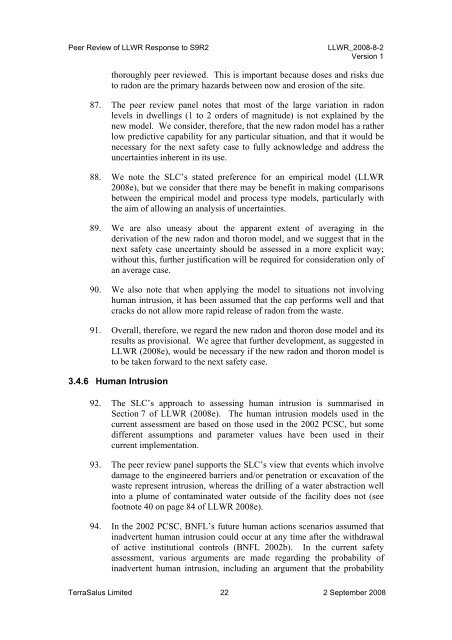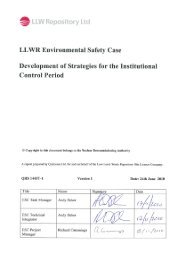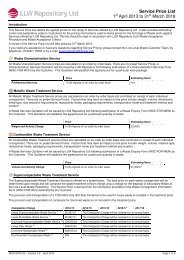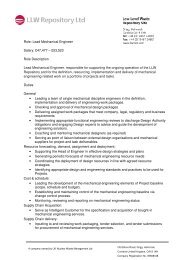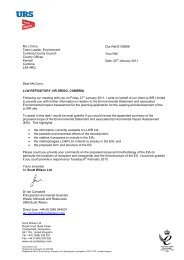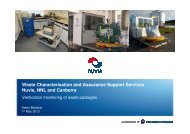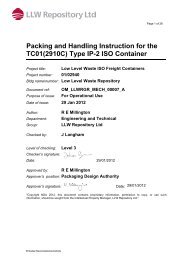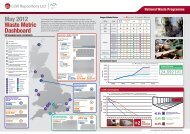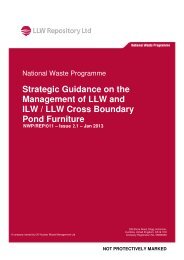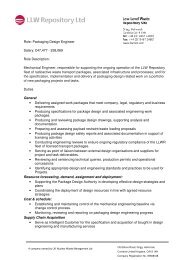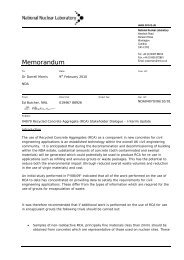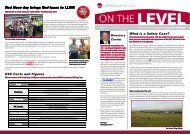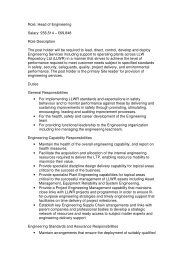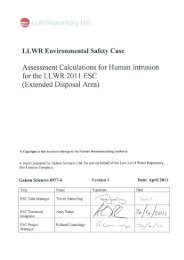Independent Peer Review of - Low Level Waste Repository Ltd
Independent Peer Review of - Low Level Waste Repository Ltd
Independent Peer Review of - Low Level Waste Repository Ltd
You also want an ePaper? Increase the reach of your titles
YUMPU automatically turns print PDFs into web optimized ePapers that Google loves.
<strong>Peer</strong> <strong>Review</strong> <strong>of</strong> LLWR Response to S9R2LLWR_2008-8-2Version 1thoroughly peer reviewed. This is important because doses and risks dueto radon are the primary hazards between now and erosion <strong>of</strong> the site.87. The peer review panel notes that most <strong>of</strong> the large variation in radonlevels in dwellings (1 to 2 orders <strong>of</strong> magnitude) is not explained by thenew model. We consider, therefore, that the new radon model has a ratherlow predictive capability for any particular situation, and that it would benecessary for the next safety case to fully acknowledge and address theuncertainties inherent in its use.88. We note the SLC’s stated preference for an empirical model (LLWR2008e), but we consider that there may be benefit in making comparisonsbetween the empirical model and process type models, particularly withthe aim <strong>of</strong> allowing an analysis <strong>of</strong> uncertainties.89. We are also uneasy about the apparent extent <strong>of</strong> averaging in thederivation <strong>of</strong> the new radon and thoron model, and we suggest that in thenext safety case uncertainty should be assessed in a more explicit way;without this, further justification will be required for consideration only <strong>of</strong>an average case.90. We also note that when applying the model to situations not involvinghuman intrusion, it has been assumed that the cap performs well and thatcracks do not allow more rapid release <strong>of</strong> radon from the waste.91. Overall, therefore, we regard the new radon and thoron dose model and itsresults as provisional. We agree that further development, as suggested inLLWR (2008e), would be necessary if the new radon and thoron model isto be taken forward to the next safety case.3.4.6 Human Intrusion92. The SLC’s approach to assessing human intrusion is summarised inSection 7 <strong>of</strong> LLWR (2008e). The human intrusion models used in thecurrent assessment are based on those used in the 2002 PCSC, but somedifferent assumptions and parameter values have been used in theircurrent implementation.93. The peer review panel supports the SLC’s view that events which involvedamage to the engineered barriers and/or penetration or excavation <strong>of</strong> thewaste represent intrusion, whereas the drilling <strong>of</strong> a water abstraction wellinto a plume <strong>of</strong> contaminated water outside <strong>of</strong> the facility does not (seefootnote 40 on page 84 <strong>of</strong> LLWR 2008e).94. In the 2002 PCSC, BNFL’s future human actions scenarios assumed thatinadvertent human intrusion could occur at any time after the withdrawal<strong>of</strong> active institutional controls (BNFL 2002b). In the current safetyassessment, various arguments are made regarding the probability <strong>of</strong>inadvertent human intrusion, including an argument that the probabilityTerraSalus Limited 22 2 September 2008


